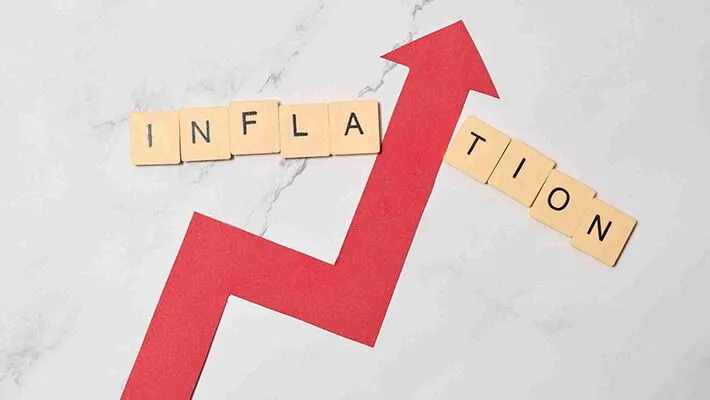Monday Nov 27 2023 06:00

10 min

Investors looking to build a balanced portfolio need to understand the differences between corporate bonds and government bonds. While both offer regular interest payments and return of principal at maturity, corporate and government bonds have unique risk-return characteristics that investors should assess.
Keep reading for a detailed look at how to compare corporate bonds vs government bonds across the critical factors of credit risk, interest rate risk, inflation risk, callability, income returns, and tax treatment.
The most fundamental difference between corporate bonds and government bonds is the level of credit risk they entail. Credit risk refers to the chance that the bond issuer cannot make interest payments or repay the principal at maturity, resulting in default.
Corporate bonds carry higher credit risk than government bonds because companies are more likely to struggle financially than governments. If a company goes bankrupt, it may default on its bonds, while governments can raise taxes or print money in a crisis. As a result, government bonds issued by developed countries like the US are considered virtually risk-free.
The higher default risk of corporate bonds is reflected in credit ratings. Government bonds issued by the US Treasury or federal agencies receive the highest possible AAA ratings. Meanwhile, most investment-grade corporate bonds fall into the BBB to A rating tiers, indicating good but not flawless credit quality. Only the most financially stable corporations receive AAA ratings on par with US Treasuries.
Here’s an interesting read for you: Know The Risks. Know Yourself
In addition to credit risk, bonds are also subject to interest rate risk. Interest rate risk refers to the exposure bond prices have to changing market interest rates.
Bond prices tend to move lower when market interest rates rise because new bonds are issued at higher rates, reducing demand for existing lower-yielding bonds. Conversely, bond prices rise when market rates fall as investors seek higher yields from existing bonds.
Therefore, fluctuating interest rates cause bond prices to fluctuate in the opposite direction. This relationship makes interest rate risk a pivotal factor in assessing corporate bonds vs government bonds.
Corporate bonds tend to have higher interest rate risk than government bonds with similar maturities. Corporate bonds are more sensitive primarily due to their higher coupon rates.
The coupon rate of a bond refers to the annual interest rate paid by the issuer to the bondholder. It is expressed as a percentage of the bond’s face value (its “par value”). The coupon rate determines the periodic interest payments that the issuer promises to make to the bondholder.
Higher coupon payments make a bond’s duration and price volatility higher. Because government bonds have lower coupons than corporate bonds with comparable maturities, they experience more minor price fluctuations when market interest rates change.
Longer maturity also increases a bond’s interest rate sensitivity. As maturity is extended further into the future, there is more time for rates to rise or fall, altering returns potentially. As corporate bonds often have longer maturities than similar government issues, their prices are impacted more by interest rate swings.
Rising inflation can reduce a bond’s actual returns. With inflation risk, the concern is that inflation will increase faster than the fixed interest rate on the bond, decreasing the investor’s actual return.
Though both corporate and government bond returns are affected by inflation, government bond returns tend to suffer more when inflation accelerates unexpectedly.

When it comes to the impact of inflation on returns, it’s worth noting that Treasury returns tend to be more directly affected compared to corporate returns. This is because rising prices can easily surpass low Treasury yields, leading to a decrease in actual returns. On the other hand, companies may have more leeway to increase prices in tandem with inflation, which can help them maintain their profitability and continue paying higher bond coupon rates.
The flexibility of corporate bonds can be particularly beneficial during rising inflation, as it allows companies to adapt to changing economic conditions and maintain a steady income stream for investors.
You might also like to read: Inflation And Recession - Can You Have Both?
Callability refers to the ability of a bond issuer to repay the principal before maturity, ending interest payments. Callable bonds typically have higher yields to compensate investors for the added uncertainty.
Corporate bonds are more likely to be called than government bonds. Companies are motivated to refinance high-rate debt when interest rates decline, replacing existing bonds with new lower-yielding ones.
Government call provisions are less common and more influenced by budget factors than interest rates. So, corporate callability is another risk-return trade-off for investors to weigh.
When assessing corporate bonds vs government bonds, traders and investors will always consider the rate of return. The two financial assets offer distinct income potential.

Corporate bonds generally offer higher interest rates than comparable government bonds. The additional returns compensate investors for taking on increased credit risk and default risk associated with corporate bonds.
On the other hand, yields on government bonds like US Treasuries are extremely low and stable. This is because these bonds are considered to have a minimal credit risk profile. US Treasury yields are partly kept low by steady demand for safe-haven government bonds. This demand is fueled by the perception that these bonds are among the safest and most reliable investments available. As a result, government bonds are often used as a benchmark for comparing the performance of other types of bonds.
Note that yields vary more widely depending on the bond’s credit rating. The highest-rated corporate bonds pay yields only slightly above comparable Treasuries. However, moving down the credit spectrum, the incremental profit over Treasuries rises more substantially.
Non-investment grade or “junk” bonds offer the highest yields by a wide margin compared to any investment-grade issues, compensating investors for their much greater risk of default.
Expand your knowledge with this write-up: What Are Margin Calls?
When comparing corporate bonds vs government bonds, it’s crucial to consider the impact of taxes on their yields. The taxes levied on interest income can significantly affect an investor’s net return.
One of the significant tax advantages of investing in Treasury and other federal government bonds is that they offer exemption from state and local income taxes on their interest income. This tax benefit makes these bonds more attractive to investors seeking ways to minimise their tax liability.
The interest income from corporate bonds is taxed at the bondholder’s ordinary federal income tax rate rather than at the lower long-term capital gains rates that apply to capital gains. This means that for investors in higher tax brackets, interest from corporate bonds is taxed at a higher rate than long-term gains would be. The investor must pay taxes on this “ordinary income” for the year it was received at their marginal tax rate, which could currently be as high as 37% at the federal level. When the bond matures and the principal is repaid, no capital gains taxes are due because the investor is simply returning their original investment amount.
Check this article about: What Is A Trade Execution?
Government bonds like US Treasuries carry minimal credit risk but pay lower yields. Corporate bonds entail higher default risk but compensate investors with higher interest rates. Corporations also tend to have greater interest rate sensitivity and callability risk. However, corporate bonds can potentially withstand inflation better than government bonds due to the flexibility companies have in raising prices. From a tax standpoint, government bonds offer exemption from state and local taxes, while corporate bond income is taxed at ordinary rates.
Investors must weigh these trade-offs between corporate bonds vs government bonds based on their risk tolerance, return objectives, time horizon, and tax considerations. Government bonds provide safety for more conservative investors. Corporate bonds allow for higher yields at the cost of higher risks. Understanding these key differences lets you select the most suitable bonds for your portfolio goals and asset allocation strategy.
Ready to step into trading? Now is the perfect time! You can trade bonds in one of the best CFD trading platforms, markets.com. In CFD trading, you will be speculating the price of your chosen bonds without having an actual asset.
You can further expand your knowledge of markets.com’s Education Centre. We offer Trading 101, which provides tips, strategies, and how-to guides. Our trading definitions make it easier to understand complex terms. At markets.com, our user-friendly platform is tailored for beginners and experienced traders.
Become a member of markets.com and access a cutting-edge trading platform!
“When considering “CFD bonds” for trading and price predictions, remember that trading CFDs involves a significant degree of risk and could result in capital loss. Past performance is not indicative of any future results. This information is provided for informative purposes only and should not be construed to be investment advice.”